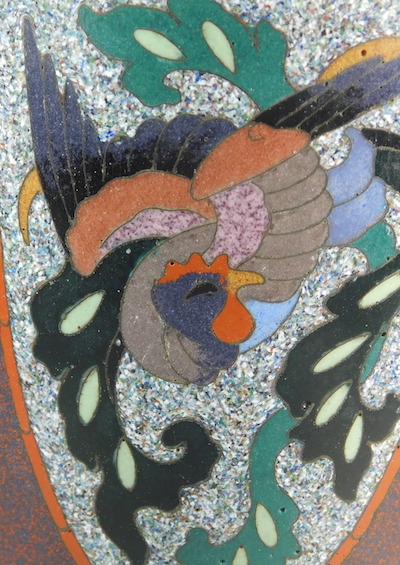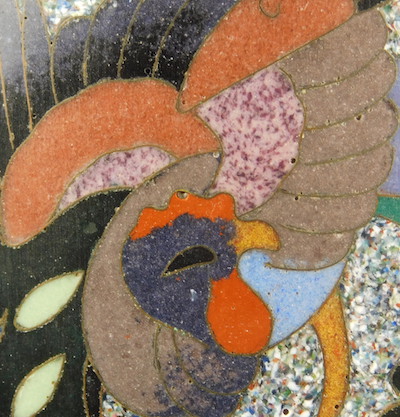This next vase continues with the “phoenix and dragon” strand. It has a more modern feel than anything we have looked at before, which means that at a first glance it almost does not look like cloisonne. A closer look at the detail though reveals the familiar techniques.
Looking at the houou bird (‘phoenix’) first there are lots of interesting things to note. For example, in earlier vases we have seen a great deal of variation in the detail of the bird designs. Here, by contrast, there is very little variation. Only in the surrounding decorations is there any sign that the craftsperson was left free to improvise.
With a little more detail we can confirm this. The wirework must have been produced beforehand to a standard pattern. Small differences crept in as it was applied, but the intention was to create two identical images. In some ways that makes this vase have less character than earlier ones.
Another question that always arises with later vases is whether the maker can be identified. Obviously this is easy if the base has a mark, but many do not. Sometimes we can look for an example with a near identical design and a mark (see next vase). In this case however we only have small clues. For example, in the upper part of the vase note the wavy wire pattern running diagonally from bottom left to upper right. It is very subtle, separating two bands of brown/black ground from two of purple/red. The wirework of the surrounding pattern runs into rather than through the divide.
Notice also the use of white enamel, here and elsewhere on the vase. There are examples with an Ando mark which share both of these features, as well as many other characteristics. When we look at the next vase the evidence will build further.
Object 15. Vase height 23.6 cm weight 396 gm.
_ _ _ _ _ _ _ _ _ _ _ _ _







